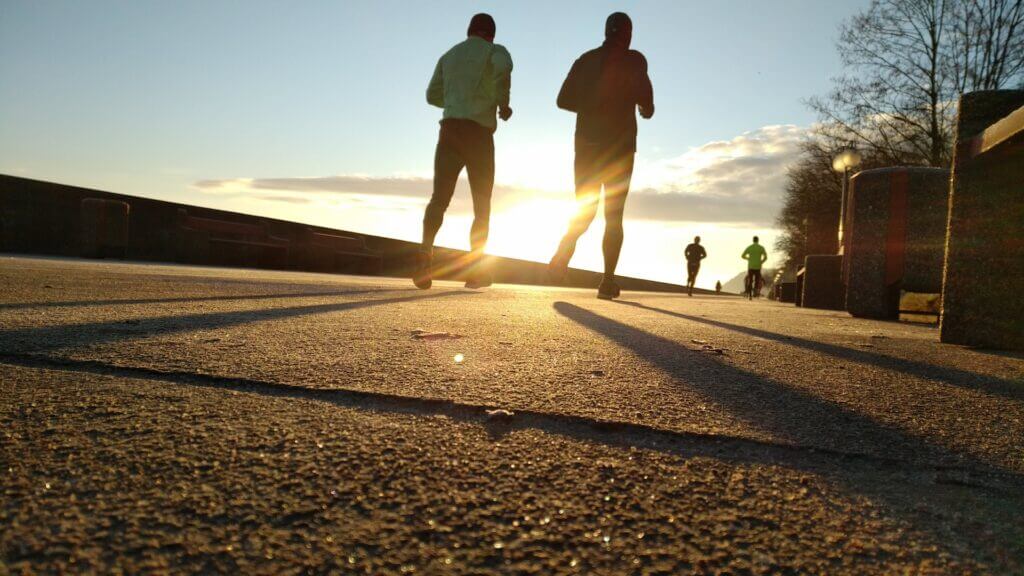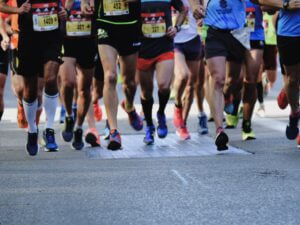Barefoot running on concrete has become a popular trend in recent years, with many runners claiming that it has helped to strengthen their feet and improve their running form.
While running without shoes on hard surfaces like concrete can provide a variety of benefits, it is important to understand the potential risks involved and take steps to minimize the chance of injury.
In this blog post, we will explore the benefits and risks of barefoot running on concrete, as well as provide tips for safe and effective training. Whether you are a seasoned runner or just starting out, this article will provide valuable insights into the world of barefoot running on concrete and help you decide if it is right for you.
Table of Contents
The Benefits of Barefoot Running on Concrete
Barefoot running on concrete has become increasingly popular in recent years, with many runners touting the benefits of ditching traditional running shoes for a more minimalist approach. But what exactly are the benefits of running barefoot on hard surfaces like concrete?
1. Stronger feet and lower legs
Running barefoot on concrete can help to strengthen the muscles in the feet and lower legs. Without the cushioning and support of traditional running shoes, the body is forced to rely on its natural shock-absorbing mechanisms.
This means that the muscles in the feet and lower legs must work harder to absorb the impact of each stride, leading to greater strength and stability over time.
2. Improved proprioception and balance
Proprioception refers to the body’s ability to sense its position and movement in space. When running barefoot on concrete, the feet are forced to adapt to changes in the surface, such as variations in texture, temperature, and incline.
This helps to improve proprioception and balance, which can translate to better running form and reduced risk of injury.
3. Better running form
Running barefoot on concrete can be an effective way to improve running form. Without the cushioning and support of traditional running shoes, the body is forced to adopt a more natural running gait, with a shorter stride length, higher cadence, and less impact on the ground. This can lead to improved running efficiency and reduced risk of injury.
4. Reduced risk of injury
Running in traditional shoes can lead to a host of injuries, such as plantar fasciitis, shin splints, and stress fractures.
By running barefoot on concrete, the body is forced to rely on its natural shock-absorbing mechanisms, leading to a lower risk of impact-related injuries. Additionally, the improved proprioception and running form associated with barefoot running can also help to reduce the risk of injury.
Overall, barefoot running on concrete can be a great way to strengthen the feet and lower legs, improve balance and proprioception, adopt a more natural running gait, and reduce the risk of injury.
However, it is important to start slowly and gradually build up distance and intensity, as well as to be mindful of the potential risks and take steps to avoid injury.
The Risks of Barefoot Running on Concrete

Barefoot running on concrete has its benefits, but it also comes with potential risks. Before diving into barefoot running on hard surfaces, it’s important to be aware of the potential downsides.
A. Skin Irritation and Injury
One of the most obvious risks of barefoot running on concrete is the increased likelihood of cuts, scrapes, and blisters. The hard surface of the concrete can be tough on the skin, especially if your feet are not used to it. It’s essential to be mindful of any potential hazards on the ground, such as sharp rocks or broken glass, and avoid running in areas where there may be debris.
B. Impact and Shock Absorption
Another concern with barefoot running on concrete is the impact and shock absorption. Unlike running on soft surfaces like grass or sand, concrete does not absorb shock well, which can increase the stress placed on the body.
This can be particularly challenging for runners who are not used to barefoot running or have underlying joint or bone issues.
C. Starting Slow and Modifying Technique
To reduce the risk of injury, it’s important to start slowly and gradually build up distance and intensity. Avoid running long distances right away and instead focus on shorter runs and giving your feet time to adjust to the new demands.
Consider incorporating minimalist shoes to provide some cushioning and protection for your feet.
D. Being Mindful of Your Body
It’s also important to be mindful of your running form. Running barefoot on concrete requires a different technique than running with shoes.
Be sure to land on the balls of your feet and avoid overstriding, which can increase the impact on your joints. Pay attention to your body and be willing to take a break or stop running altogether if you experience any pain or discomfort.
Overall, barefoot running on concrete can be a great way to improve foot strength and running form, but it’s important to approach it with caution. Take steps to reduce the risk of injury and be willing to modify your approach if necessary. With proper preparation and mindfulness, you can safely enjoy the benefits of barefoot running on concrete.
Looking for an alternative to barefoot concrete running? Check out our latest blog post on the pros and cons of barefoot treadmill running!
Tips for Safe and Effective Barefoot Running on Concrete

If you’re interested in trying barefoot running on concrete, there are some important tips to keep in mind to ensure that you stay safe and avoid injury. Here are some key considerations:
- Start Slowly and Gradually Build Up Distance and Intensity
It’s important to start slowly and gradually increase your distance and intensity. This will help your feet and lower legs adapt to the new demands of barefoot running on concrete. Start with shorter distances on a smooth, flat surface and gradually increase the distance over time.
- Warm-Up and Cool Down
Before starting your barefoot run, warm up with some dynamic stretching exercises to get your muscles and joints ready for the activity. After your run, cool down with some static stretching exercises and foam rolling to prevent soreness and tightness.
- Choose the Right Surface
Look for a smooth, clean surface to run on, such as a track or a paved path. Avoid running on rough or uneven surfaces, such as gravel or dirt trails, which can increase your risk of injury.
- Wear Minimalist Shoes if Necessary
If you’re not ready to run completely barefoot, you can wear minimalist shoes that provide minimal support and cushioning. Look for shoes with a wide toe box that allows your toes to splay out naturally and with a thin sole that allows you to feel the ground beneath you.
- Modify Your Running Technique
Barefoot running requires a different running technique than running in shoes. To reduce your risk of injury, focus on landing on the midfoot or forefoot instead of the heel, keep your stride short and quick, and keep your feet close to the ground.
- Strengthen Your Feet
To build strength and endurance in your feet and lower legs, consider doing foot and calf strengthening exercises, such as calf raises, toe curls, and heel walks. These exercises can help to prevent injuries and improve your performance.
- Listen to Your Body
If you experience pain or discomfort while running barefoot on concrete, stop immediately and rest. It’s important to listen to your body and not push yourself too hard, too fast. Give your body time to adapt to the new demands of barefoot running on concrete.
By following these tips, you can enjoy the benefits of barefoot running on concrete while minimizing your risk of injury. Remember to start slowly, choose the right surface, and modify your running technique to ensure a safe and effective workout.
Conclusion
In conclusion, barefoot running on concrete can be a great way to strengthen the feet and lower legs, improve running form, and reduce the risk of injury.
While there are potential risks associated with this type of exercise, taking the proper precautions and gradually building up distance and intensity can help to minimize these risks.
With the right mindset, preparation, and guidance, anyone can reap the benefits of barefoot running on concrete. So why not give it a try and see how it can enhance your running experience and help you build stronger, more resilient feet?


